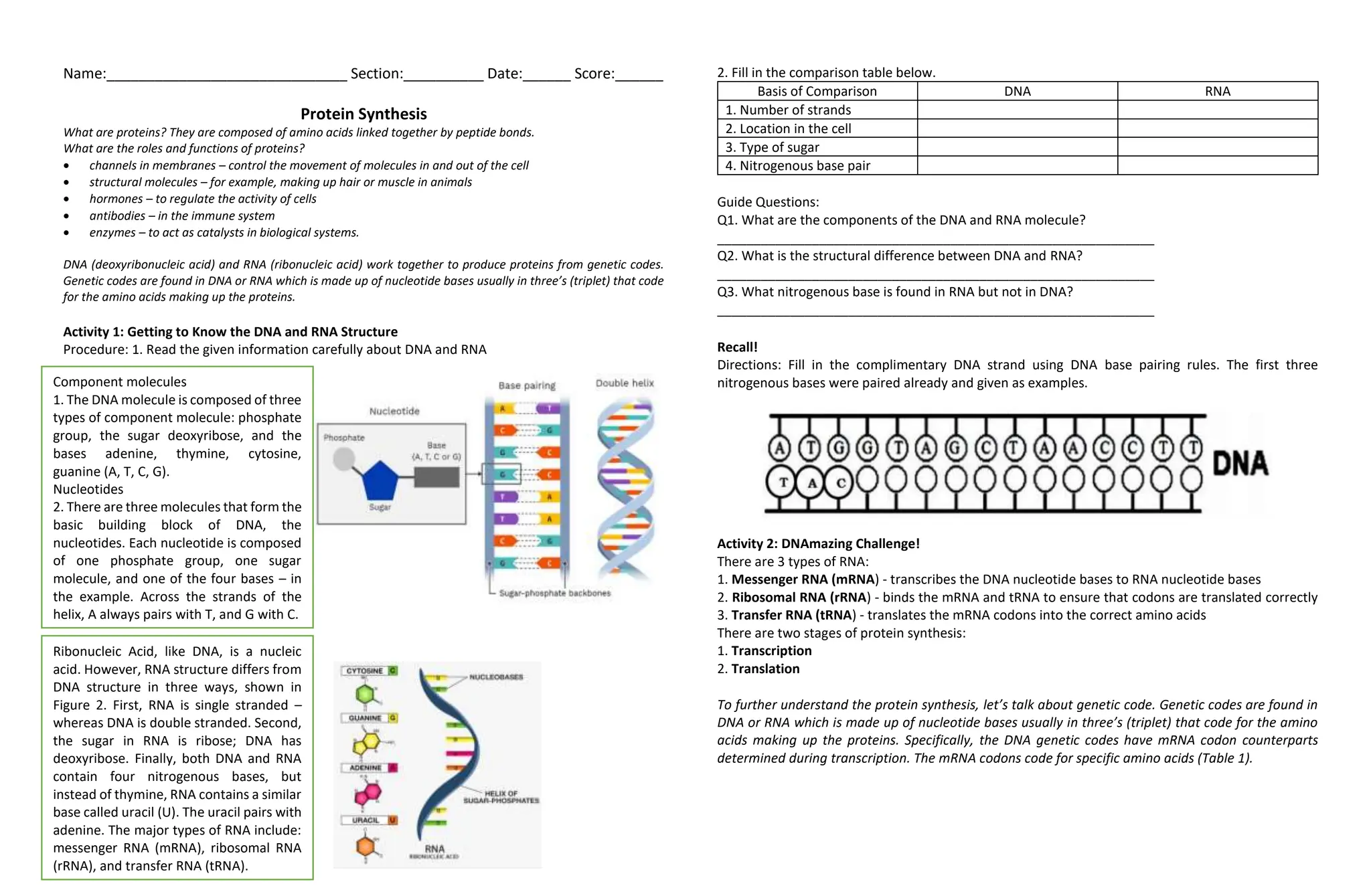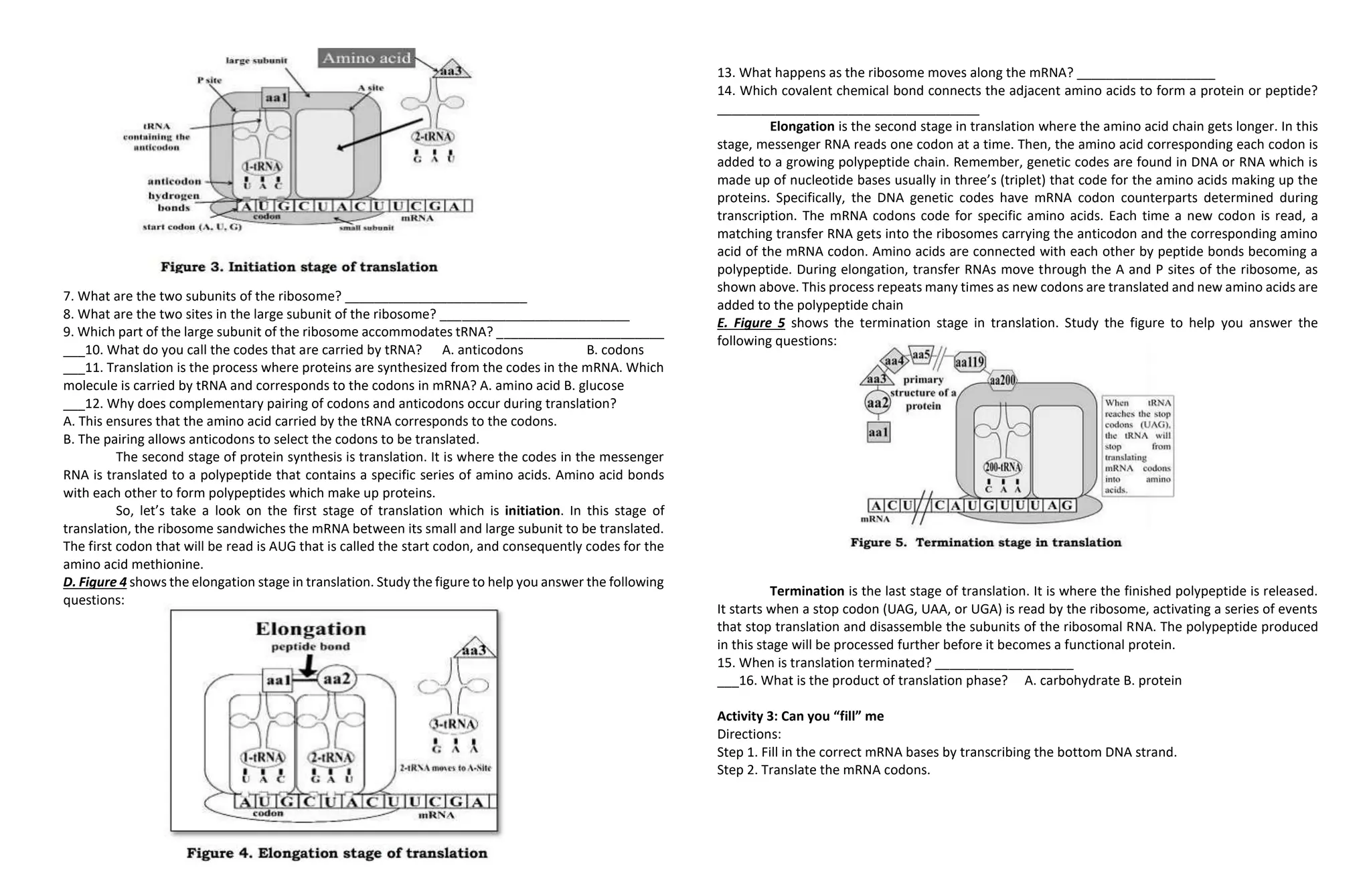The document provides an overview of protein synthesis, explaining the roles of proteins, the functions of DNA and RNA, and the stages of transcription and translation in protein production. It details the structures of DNA and RNA, their nucleotide components, and the genetic codes involved in forming amino acids. Additionally, it includes activities and assessments to reinforce understanding of the processes and terminology associated with protein synthesis.



